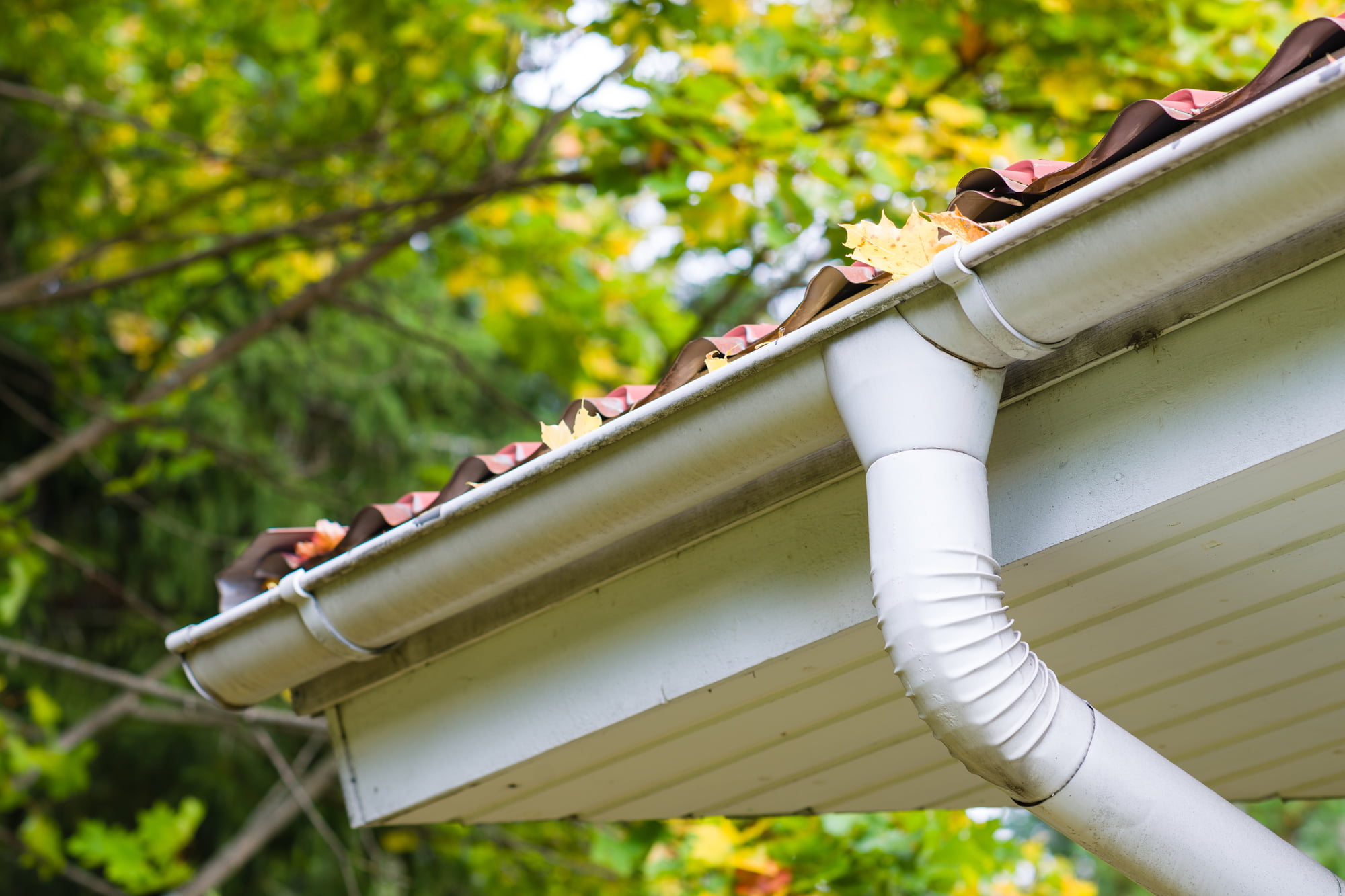Blocked gutters and downpipes can be a serious property defect if they have caused water damage to the eaves and structural integrity of the home. Often the problem is magnified during a storm or heavy downpour.
The purpose of gutters and downpipes are to channel rain water away from the home into stormwater drains.
In Queensland, it’s paramount for the stormwater system to be free-flowing to prevent a backflow of water through the roof cavity. If water has nowhere to flow to, it can cause serious damage to the internal structure of the home.
What causes blocked gutters and downpipes on a property?
Blocked gutters are commonly caused by debris. If the roof is surrounded by trees, the leaves are often caught in the gutters. These leaves turn into decomposed debris. When the gutters aren’t cleaned, this leaf debris can turn into a sludge when it rains. This can not only block your gutters but cause a blockage in the downpipe, too.
Other blockages can include sporting equipment (tennis balls), sticks and twigs, feathers, fruit, flowers, rodents, and even discarded zip ties from seasonal Christmas lights.
A regular clean of the gutters can prevent a blockage and a subsequent overflow of water during heavy rainfall.
How do you fix blocked gutters and downpipes?
Blocked gutters and downpipes can be easy to identify during a rain event. But a property owner shouldn’t wait till then to diagnose a blockage.
A hose or bucket of water can be used to fill the gutters and downpipes to check if the water flows freely or backs up into the gutters.
For blockages which can’t be nudged with a water hose, a plumber will need to be called with a drain camera to locate the blockage, and then use a jet rodding machine to blast it away.
In some cases, a property may not have enough downpipes to remove water from the gutters. It’s important to ensure adequate downpipes are installed as this can also cause a backlog of water around the roof.
What do the waterproofing Queensland standards state about gutters and downpipes?
The standards used for gutters and downpipe installation are The National Construction Code Building Code of Australia 2019 (NCC BCA) in relation to metal roofing. Part 2.2 details requirements for damp and weather-proofing.
The most common means to satisfy the state requirements is to install gutters and downpipes in accordance with AS/NZS 3500.3.
Gutters must be installed with a fall of 1:500 for eaves gutters, unless fixed to metal fascias. The brackets must be 1.2 metres apart.
Downpipes cannot serve more than 12 metres of gutter. They should be located as close as possible to valley gutters and be appropriately sized due to location and rainfall intensity.
Downpipes are commonly 90mm in diameter, but many plumbers recommend 100mm to allow for adequate drainage during a storm.
In BCA Vol 1 Part 3.5.2, it states, “The roof drainage system including gutters and downpipes should be connected to a compliant stormwater drainage system and should be designed so that any overflow during heavy rain periods is prevented from flowing back into the building.”
What happens when water gets behind brick veneer or the internal structure of the house?
Regular cleaning of the gutters and downpipes should prevent water from flowing into the eaves and through the roof cavity.
Water can travel fast so it needs to be a major blockage to cause water to flow behind the brick veneer and into the internal structure of the home. This is not ideal and can attract termites (as they love moisture) or cause mould and mildew. If left too long, it can cause structural damage.
An inspection of the roof, gutters and downpipes can help determine the best course of action to rectify. A roof plumber will be the most qualified to inspect and repair.
When should a property owner replace their gutters and downpipes?
A blocked gutter or downpipe is not usually cause for a full replacement; unless the blockage has caused holes or rust penetrations, deeming the channels useless during a downpour.
Gutters and downpipes are usually replaced because they have deteriorated due to age, corrosion or rust.
When doing an open home inspection you should keep an eye out for neglected guttering as a sign of neglected maintenance in a property and a red flag of possible further damage. A pre-purchase inspection by a qualified inspector is the best way to determine whether they are adequate or need attention, and whether the property has sustained significant water damage as a result of damaged guttering and downpipes. A building inspector will do a thorough visual check of the gutters and downpipes of any property you are interested in buying, to ensure you don’t get any nasty surprises.

